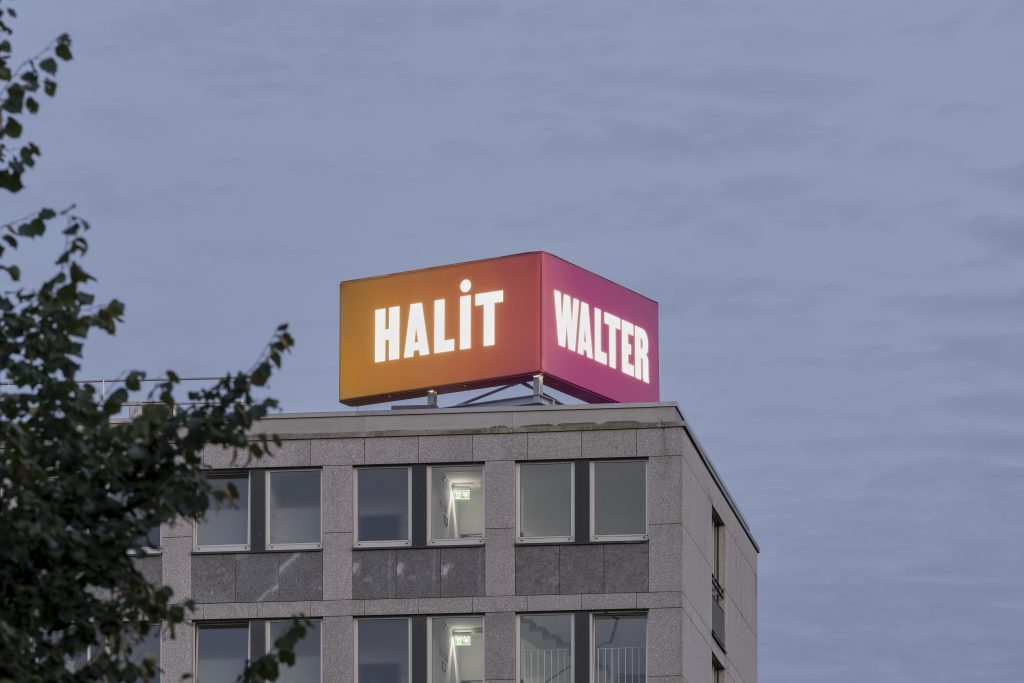
86° WALTER HALİT consists of a two-sided light sculpture that features the names “Walter” and “Halit” in large letters, protruding over the north-eastern edge of the roof of the Regional Council building in Kassel Germany. Like an additional corner, the two names shine forth in different directions and meet at an angle of 86°. Behind the two names, the structure is illuminated in spectral colors that shift from yellow-orange to magenta-violet.
The name “Walter” faces in the direction, where Dr. Walter Lübcke, the former Regional President of Kassel, lived and was murdered. The name “Halit” faces in the direction, where Halit Yozgat lived and was murdered. Walter Lübcke, was murdered by a far-right extremist on the terrace of his family home in Wolfhagen-Istha on the night of 1 June 2019. Halit Yozgat was murdered on the afternoon of 6 April 2006 while at work in his popular internet café on Kassel’s Holländische Strasse, in a racially motivated attack carried out by far-right extremists from the NSU.
Viewed from above, the light sculpture resembles the needle of a compass. Its deviating angles appears almost to realign the Regional Council building. Its spectral colors disrupt the neutrality of the existing architecture and put the building in the spotlight. The building is a typical example of 1950s architecture. It was here, on the fifth floor, that Dr Walter Lübcke worked as Regional President from 2009 until he was murdered in 2019. In 2021, employees of the Regional Council launched a call for proposals for an artwork to commemorate their former employer. I responded with adding Halit Yozgat to the picture.
The names are set in the font MARTIN, named after the Black US civil rights activist Martin Luther King Jr. The font draws inspiration from poster campaigns from the civil rights movement and stands for the continuity of anti-racist struggles.
On the website of the project you will find the two-part podcast that tells the stories of Walter and Halit and addresses the broader structural contexts in which their stories take place. In addition to the podcast, this website also features an interactive landscape. The murders of Walter and Halit are not isolated cases; they form part of a broader landscape of structural racism and resistance, filled with many other individuals, initiatives, and points of connection.